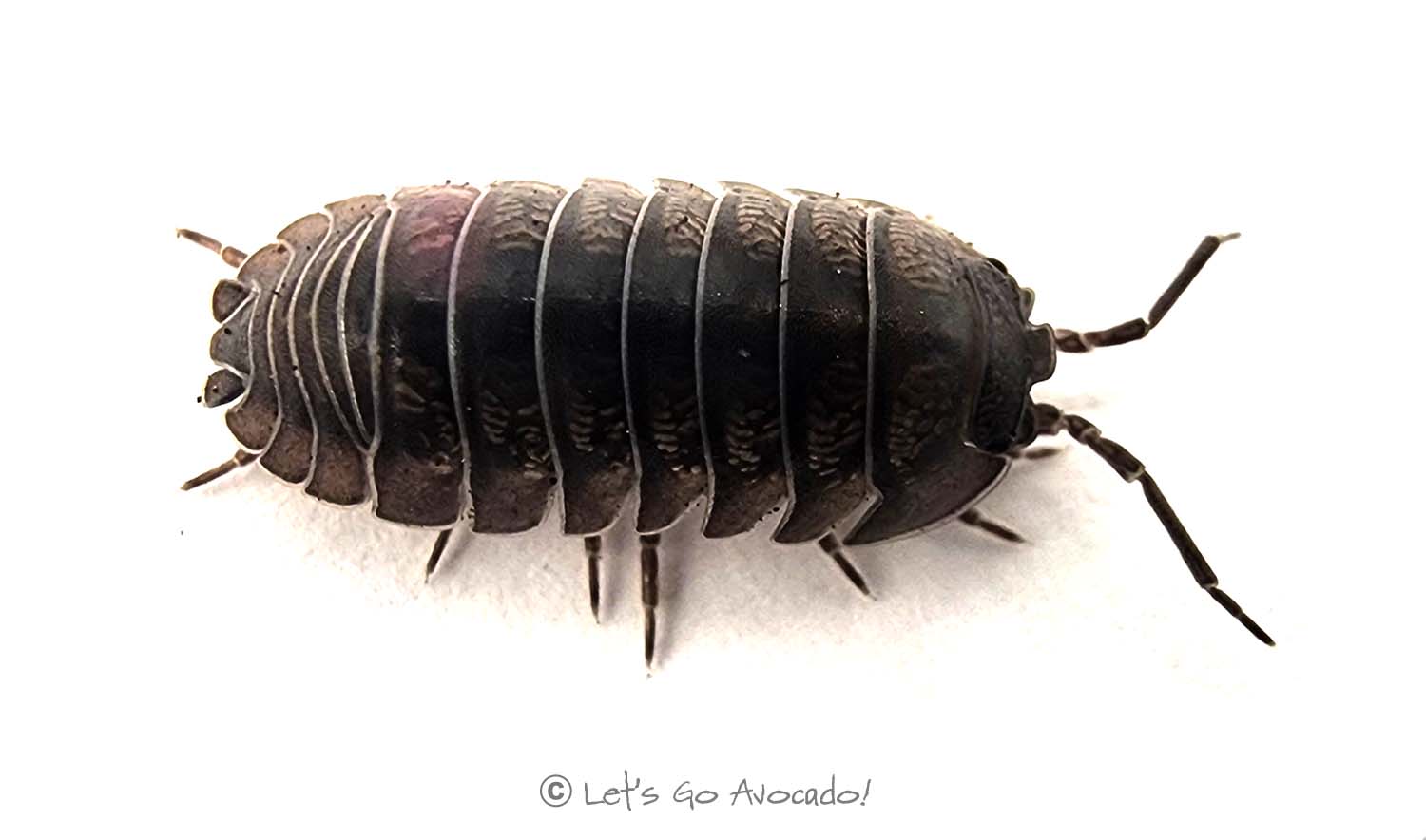

Armadillidium Vulgare
Common pill-bug
Armadillidium vulgare
This page may contain affiliate links.
Read our disclosure and privacy policy here.
Armadillidium vulgare, commonly known as the common pillbug or roly-polyAn isopod is a type of small creature that belongs to the crustacean family, just like crabs and lobsters. They have a special body shape with a hard outer shell, which protects their soft insides. Learn More, is a species of terrestrial isopod that is widely distributed across many regions of the world. These small, armored creatures are known for their unique ability to roll into a tight ball when threatened, providing them with a protective shield. Armadillidium vulgare is typically gray or brown in color and has a segmented body with 7 pairs of legs. They are found in various habitats, such as gardens, forests, and urban areas, where they play important roles in decompositionDecomposition is a natural process that happens when living things, like plants, animals, or other organic matter, break down into simpler substances. It is a part of the circle of life and plays an essential role in recycling nutrients back into the environment. Learn More and nutrient cycling. These isopods are detritivoresDetritivores are special animals that eat dead plants and animals. They are like the cleaners of the animal kingdom. Just as you might clean up crumbs or sweep away leaves, detritivores help clean up the environment by eating things that have died. Learn More, feeding on decaying organic matter like leaves and wood.
Armadillidium Vulgare
Common Name
Other Names
Latin Name
Distribution
Appearance
Size
Habitat
Behavior
Diet
Lifecycle
Communication
Defense Mechanisms
Ecological Importance
Colony Structure
ConservationThe act of protecting and preserving natural resources and the environment. Conservation efforts are important to protect beavers and their habitats. Learn More Status

There’s a lot to explore right where we are, in our own neighborhoods and backyards! Join us while we get off the couch and explore the everyday wonders of nature, science, space, engineering, art, and anything else we stumble upon during on our adventures.







